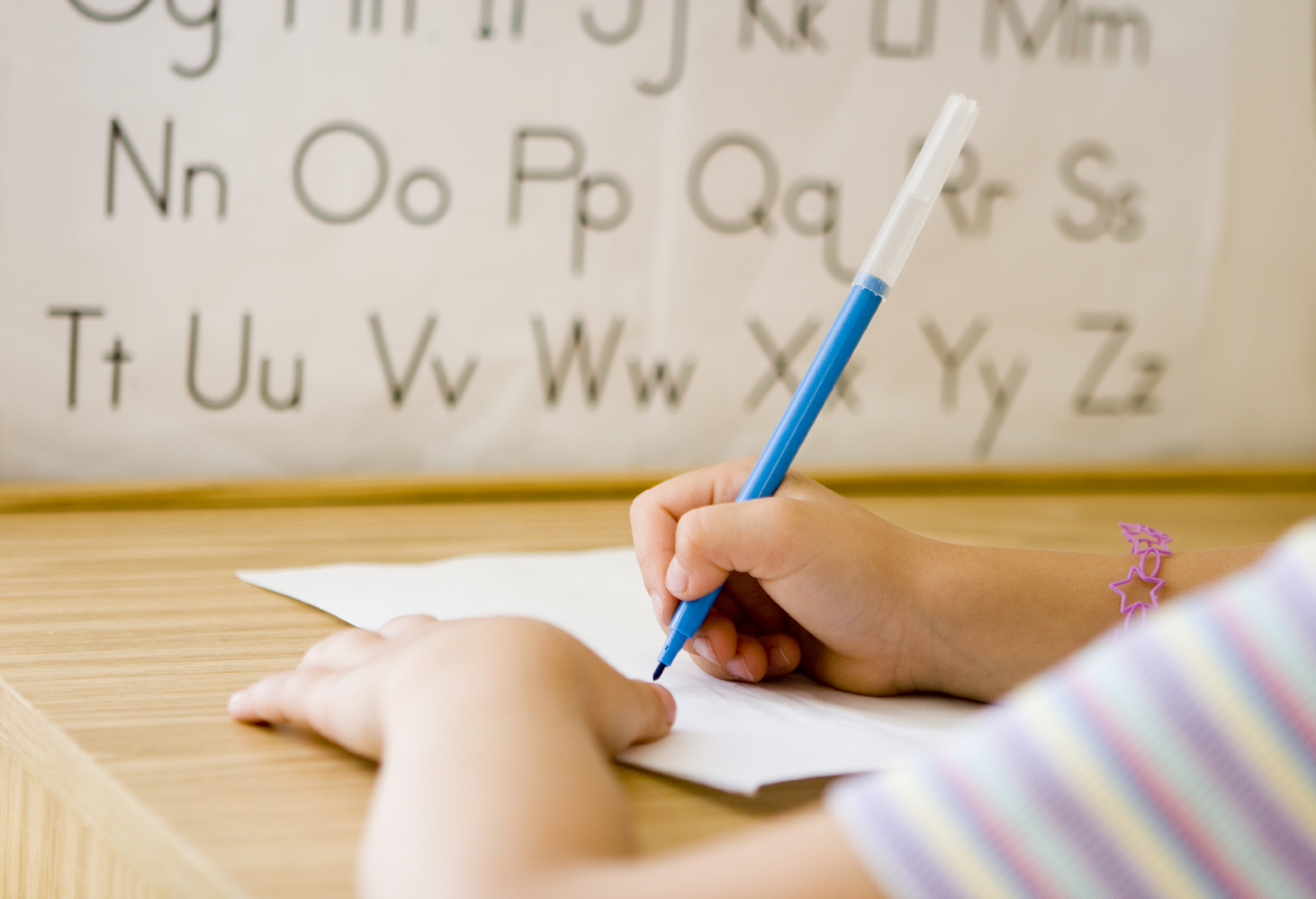
“Write this again. Neatly.”
Has your child been given that directive? Does she know what it means or what to do about it?
Over the years, I have had many children referred for occupational therapy evaluation and services because of “messy” or “illegible” handwriting. The referrals have included children with and without official labels. Often the children are just as frustrated as the teacher is, and some cannot even read their own writing. When much of the school day is spent writing, handwriting legibility becomes a major issue.
When I receive a referral, I usually start by obtaining samples of their writing. “Illegible” can mean many things: not forming their letters correctly, not writing on a line or with consistent size, writing over incomplete erasures or cramming all their letters and words together.
I then observe the child writing to check positioning, grasp and pace of writing or copying. Following this, I talk to them and ask them what they think about their writing. One fourth grader who was sent to me told me that his teacher said to “write neater.” I asked if he knew what that meant and he said “no.” I believe him. He didn’t know where to start, and no wonder! Writing is a complicated task and it’s hard to know where to begin.
Before despairing or calling in an expert, here are some considerations and interventions you as a parent can use to support your child:
1. Check if your child is sitting in a chair where their feet can rest on the floor
Have you ever tried to write while sitting on a bar stool which had no place to secure your feet? You need a stable body in order to write efficiently.
2. Is the writing surface at about 2” above their elbow height?
I had one student who was sitting on her feet to achieve this level. No wonder she was fatigued and had such inconsistent writing. It may be worthwhile to check your child’s seat at school and then again if they have a growth spurt!
3. Do they have a functional grasp?
Therapists have come to know that the three-point dynamic grasp is not necessary for everyone, but the grasp does need to be functional and allow for comfort and speed. It may be beneficial to try different writing utensils of various diameters and shapes as well as trying a pencil grip. The pencil grips may just be a temporary tool to train a more functional and consistent grasp.
4. For beginning writers, use supporting multisensory activities for development of hand strength and pincer grasp
These include practicing writing in the air, writing in sand, forming letters from playdough, drawing simple lines/curves/shapes, coloring with triangle crayons, playing with small wind-up toys, drawing chalk pictures on boards or sidewalks, stringing beads, and painting on an easel. When you do teach letters, be sure to teach upper and lower case at the same time!
5. For your older writers, continue to work on pencil control in a variety of ways
This may include more complex mazes (many free ones online), graphics games, step-by-step drawing or non-graphics activities such as puzzles or origami.
6. Practice writing letters correctly
It is harmful for students to repeat writing letters incorrectly, as the goal is to write legible letters and pave the way for motor memory and automaticity of correct letter formation. Have a letter strip available as long as necessary. One very important skill for your child to learn is self-evaluation. Help them to find and circle the letters which are troublesome, make sure there are spaces in between words, and seat their letters on the line.
7. Don’t forget about numbers!
When numbers are unclear, there is no context for a teacher to read what your child meant, so writing numbers legibly and with ease is an important skill. Have your child write out her numbers and then check which need work. I had one child who filled out a 100s board in first grade. His teacher said it was indecipherable, but in reality there were three numbers which were difficult for him, and it made all his math work look messy. He could not even figure out the numbers in his copied problems!
In summary, your child needs to be in a comfortable position for writing and have a comfortable grip on the writing utensil. They need to be taught how to form numbers and letters correctly with the goal of automaticity and legibility so they can concentrate on content. If they continue to have problems, you may want to have your child screened by an occupational therapist. It may also be beneficial to have their vision acuity and eye teaming evaluated by a developmental vision optometrist.
It’s never too late to improve! You may want to work on your own handwriting at the same time!











